|
|
||||||||||||||||||||||||
The USSR achieves the world's first fully automated docking in space In October 1967, a pair of unmanned Soyuz spacecraft, officially identified as Kosmos-186 and Kosmos-188, performed the world's first fully robotic docking in orbit. This truly remarkable engineering achievement provided a major morale boost for the Soviet space program still reeling from the loss of Vladimir Komarov. In the long term, the automated docking opened the door to numerous future advances in the exploration of space, including the first lunar missions and early orbital stations. The Soviet automated docking came after the crew of the US Gemini-8 spacecraft had made a manually controlled docking with an Agena rocket in March 1966.
Joint mission of Kosmos-186 and Kosmos-188 at a glance:
|
 |
|||||||||||||||||||||||
| MISSION HISTORY | ||||||||||||||||||||||||
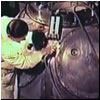 |
Recovering from Soyuz-1 tragedy The preparation for the dual mission of Soyuz vehicles No. 5 and No. 6 began within weeks of the tragic death of Vladimir Komarov. It went without saying that the next pair of Soyuz ships had to be reverted back to automated mode to perform a dual test mission, which, hopefully, would be enough to rehabilitate the problem-plagued spacecraft and qualify it for another piloted mission after the accident. |
|||||||||||||||||||||||
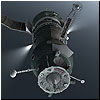 |
Soyuz 7K-OK No. 6 (Kosmos-186) lifts off The Soyuz 7K-OK No. 6 (Amur) (active vehicle) lifted off on Oct. 27, 1967, at 12:30 Moscow Time from Site 31 with a deviation of just 0.02 seconds from the scheduled time. (466) In the official press reports, the spacecraft was identified as Kosmos-186. |
|||||||||||||||||||||||
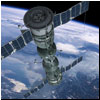 |
Soyuz spacecraft dock in space The Soyuz 7K-OK No. 5 (Baikal) (passive vehicle) lifted off on Oct. 30, 1967, at 11:12:46 Moscow Time from Site 1 in Tyuratam. It was officially announced as Kosmos-188. For the next hour, the flight control team had little to do but wait. The two ships conducted their pioneering rendezvous while crossing the Pacific, the Atlantic and then Africa, out of range of mission control. |
|||||||||||||||||||||||
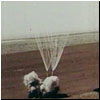 |
Landing of Soyuz 7K-OK No. 6 (Kosmos-186) With its propellant cache nearly depleted, Vehicle No. 6 (Kosmos-186), was set for reentry first on Oct. 31, 1967. However another failure of flight control sensors prevented the planned aerodynamic descent and forced the descent module on a steep ballistic trajectory, which, nevertheless, concluded with a soft landing. |
|||||||||||||||||||||||
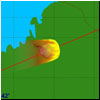 |
Landing of Soyuz 7K-OK No. 5 (Kosmos-188) The Soyuz 7K-OK No. 5 spacecraft was directed to reentry on Nov. 2, 1967. This time, a flight control system failure triggered the self-destruct mechanism on the descent capsule, which destroyed the vehicle before it had a chance to reach the ground.
|
|||||||||||||||||||||||
Aftermath of the Soyuz docking mission As engineers at the TsKBEM design bureau began painstaking sifting through the data from the complex joint mission of the 7K-OK spacecraft, the official Soviet process celebrated the success of the world's first automated docking, while keeping the lid on the design of the new space vehicle.
|
||||||||||||||||||||||||
NEXT CHAPTER: 7K-L1 No. 5L |
||||||||||||||||||||||||